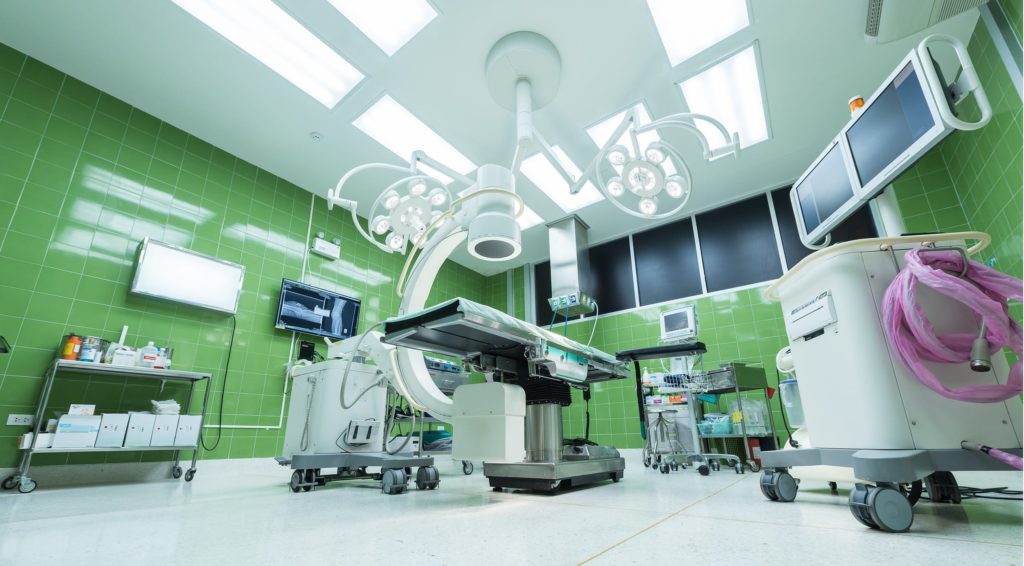Using Drones to Transport Organs to Hospitals

When Trina Glispy learned that her kidneys were failing in 2011 she was well aware of the devastating consequences it would mean. As a nurse, she witnessed countless patients suffer through the same dialysis treatments she would be needing. She knew the odds of finding a matching organ donor were slim. After eight years of exhausting dialysis treatments Trina had begun to loose hope of ever finding a match. That is until she was in the middle of her latest treatment on April 18, 2019. It was then that she got the call that a kidney donor had been found and she would be receiving the life saving surgery she needed. The very next day she was admitted for surgery.
Trina’s story is not unique. Hundreds of thousands of people in just the United States are desperately waiting to receive organ transplants. While records have shown that more and more people are deciding to become organ donors, a big part of the problem is safely getting the donations to where they need to be in a timely manner. Once an organ is harvested, with every passing second its condition deteriorates. The current means of transporting a matching organ to a patient are often too long. One of the many doctors struggling with this faulty system is Dr. Joseph R. Scalea.
As an assistant professor of surgery at the University of Maryland School of Medicine, he recalls once having to wait 29 hours for an organ to reach his hospital from Alabama. He said, “Had I put that in at nine hours, the patient would probably have another several years of life.” Dr. Scalea became determined to find a better way to save the lives of his patients.
Dr. Scalea joined forces with Matthew Scassero, the director of the University of Maryland Unmanned Aircraft System (UAS) Test Site and Aerospace Engineering. Together they came up with a plan that would allow doctors to get organ donations to where they need to be in timely manner with the use of drones. Doing this was no easy task. Scassero had to figure in all safety and logistic issues to fly a drone within FAA regulations. Scalea then had to provide information on how an organ needs to be packaged and handled to keep it viable.
Professor Scassero said that, “We had to create a new system that was still within the regulatory structure of the FAA, but also capable of carrying the additional weight of the organ, cameras, and organ tracking, communications, and safety systems over an urban, densely populated area — for a longer distance and with more endurance. There’s a tremendous amount of pressure knowing there’s a person waiting for that organ, but it’s also a special privilege to be a part of this critical mission.”
They designed a drone with four top side main rotors, along with two back up rotors, dual batteries, and two feet to land on, along with a backup parachute. It was calibrated to measure temperature, and barometric pressure. Though the drone was set to fly autonomously, there were two pilots available to override the flight if need be. The drone is also equipped with cameras and sensors to record the historic event while at the same time relaying live updates to the controllers and doctors waiting on it’s precious cargo.
Before this groundbreaking flight took place, Scassero ran his drone through many trails first. The drone flew 44 test flights, racking up over 700 hours of flight. Rather than transporting organs in these trials, the drone carried other medical supplies such as blood, saline, and medications. Finally the drone was ready and a matching donor had been found for one of Dr. Scalea’s patients. Within a fraction of the time typically found in organ transportation, Dr. Scalea was able to complete Trina’s surgery.
Dr. Scalea jokingly said that this new technology is like having an Uber driver for organs. It’s quick, cost efficient, and can be monitored in real time. As far as he can see there should be no reason for any organ donations to ever be compromised because they are stuck in traffic. These drones can save the vitality of an organ, thereby saving a life.
|